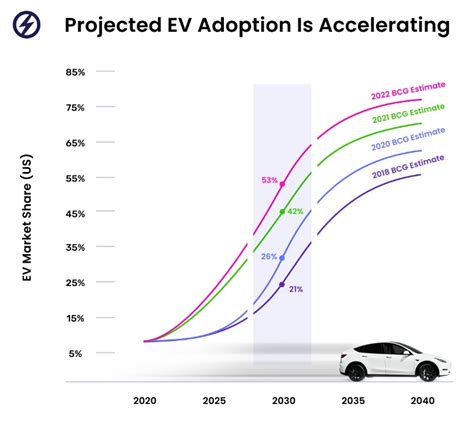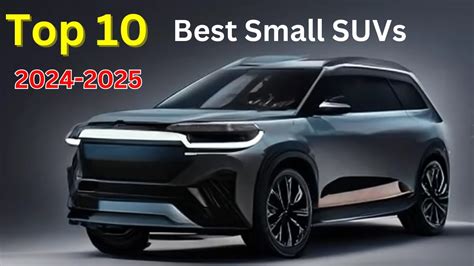
Electric vehicle (EV) interest remains strong among consumers, but high costs and charging infrastructure concerns are significant barriers to widespread adoption, according to a recent BMW-sponsored study. The research highlights a persistent gap between consumer desire for EVs and their actual purchasing decisions, emphasizing the need for more affordable vehicles and a more robust charging network.
A comprehensive study commissioned by BMW reveals that while a substantial portion of consumers express interest in electric vehicles, the high purchase price and anxieties surrounding charging availability and speed continue to impede mass adoption. The findings underscore the necessity for automakers and policymakers to address these critical issues to accelerate the transition to electric mobility. The study points out that many potential buyers are still on the fence, swayed by practical considerations that outweigh the environmental benefits and technological appeal of EVs.
The study, which surveyed a diverse group of consumers across various demographics, found that approximately 60% expressed interest in owning an EV in the future. However, only a fraction of those interested consumers were actively planning to purchase one in the next year. The primary reasons cited for this hesitation were the upfront cost of EVs, which remains significantly higher than comparable gasoline-powered vehicles, and the perceived inconvenience of charging, especially for those without access to home charging or those living in apartment buildings.
“The consumer is telling us that they like the idea of EVs, but they’re not quite ready to make the jump,” said a BMW spokesperson. “We need to focus on making EVs more accessible and addressing their concerns about charging infrastructure.”
The cost factor is multifaceted, encompassing not only the initial purchase price but also concerns about battery replacement costs and the long-term resale value of EVs. Many consumers are uncertain about the lifespan of EV batteries and the potential expense of replacing them, which can be a significant deterrent. The study also revealed that potential buyers are worried about the depreciation of EVs, given the rapidly evolving technology and the potential for newer models to offer superior performance and features.
Charging infrastructure emerged as another major hurdle. Consumers expressed concerns about the availability of public charging stations, particularly in rural areas and apartment complexes. They also cited concerns about the charging speed, with many finding the current charging times to be too long and inconvenient compared to refueling a gasoline-powered vehicle. “People are worried about being stranded or having to wait a long time to charge their cars,” the BMW spokesperson added. “We need to invest in a more reliable and widespread charging network to alleviate these concerns.”
The study also highlighted the importance of government incentives and subsidies in promoting EV adoption. Many consumers indicated that they would be more likely to purchase an EV if they were eligible for tax credits or rebates. These incentives can help to offset the higher upfront cost of EVs and make them more competitive with gasoline-powered vehicles. However, the availability and eligibility requirements for these incentives vary widely across different states and countries, creating confusion and uncertainty for potential buyers.
Furthermore, the study suggested that automakers need to do a better job of educating consumers about the benefits of EVs. Many consumers are unaware of the long-term cost savings associated with EV ownership, such as lower fuel and maintenance costs. They are also unfamiliar with the environmental benefits of EVs, such as reduced greenhouse gas emissions and improved air quality. By providing more comprehensive information about the total cost of ownership and the environmental impact of EVs, automakers can help to overcome some of the skepticism and resistance to adoption.
Another crucial aspect highlighted by the study is the need for standardization in charging infrastructure. Currently, there are several different charging standards, which can be confusing for EV owners. A unified charging standard would simplify the charging process and make it easier for EV owners to find compatible charging stations. This would also encourage the development of a more robust and reliable charging network.
The study also delved into the preferences of different consumer segments. It found that younger consumers and those living in urban areas are generally more receptive to EVs than older consumers and those living in rural areas. This suggests that targeted marketing and outreach efforts may be necessary to reach different consumer groups and address their specific concerns. For example, younger consumers may be more interested in the technology and performance aspects of EVs, while older consumers may be more concerned about reliability and safety.
In response to the study’s findings, BMW announced plans to invest heavily in expanding its EV lineup and improving its charging infrastructure. The company aims to offer a fully electric version of every model in its lineup by 2030. It is also working to develop faster and more convenient charging solutions, such as wireless charging and battery swapping technology.
“We are committed to making electric mobility more accessible and appealing to consumers,” said the BMW spokesperson. “We believe that EVs are the future of transportation, and we are investing heavily in the technology and infrastructure to support their widespread adoption.”
The findings of the BMW study are consistent with other recent research on EV adoption. A survey conducted by Consumer Reports found that range anxiety and charging time are major concerns for potential EV buyers. Another study by J.D. Power found that customer satisfaction with EV charging is lower than satisfaction with gasoline refueling. These studies collectively paint a picture of a market that is ripe for growth but still faces significant challenges.
To address these challenges, a collaborative effort involving automakers, policymakers, and charging infrastructure providers is essential. Automakers need to continue to innovate and develop more affordable and efficient EVs. Policymakers need to provide incentives and regulations that support the growth of the EV market. Charging infrastructure providers need to invest in a more robust and reliable charging network. Only through a coordinated effort can the full potential of electric mobility be realized.
The impact of widespread EV adoption extends beyond individual consumers and automakers. It has significant implications for the environment, the economy, and society as a whole. By reducing greenhouse gas emissions, EVs can help to mitigate climate change and improve air quality. They can also reduce dependence on foreign oil and create new jobs in the clean energy sector. The transition to electric mobility is not just about changing the cars we drive; it’s about building a more sustainable and prosperous future for all.
In conclusion, the BMW study provides valuable insights into the current state of the EV market and the challenges that need to be addressed to accelerate adoption. While consumer interest in EVs remains high, the high cost and charging infrastructure concerns are significant barriers. By addressing these issues through innovation, policy support, and collaborative efforts, the full potential of electric mobility can be realized. The future of transportation is electric, and it is up to all stakeholders to work together to make that future a reality.
The study also touched upon the psychological aspect of transitioning to EVs. Many drivers have deeply ingrained habits and routines associated with gasoline-powered vehicles. Refueling is a quick and familiar process, while charging requires more planning and patience. Overcoming this psychological barrier requires a shift in mindset and a willingness to adapt to a new way of thinking about transportation.
To further encourage EV adoption, automakers could also focus on creating more emotionally appealing EVs. While many EVs are praised for their efficiency and technology, some consumers find them to be lacking in style and personality. By designing EVs that are more visually appealing and offer a more engaging driving experience, automakers can attract a wider range of buyers. This could involve incorporating more luxurious features, sportier styling, or advanced technology that enhances the driving experience.
Moreover, the study suggests a need for greater transparency and standardization in battery health and warranty information. Many consumers are hesitant to purchase EVs due to concerns about battery degradation and the potential cost of replacement. By providing clear and comprehensive information about battery lifespan, performance, and warranty coverage, automakers can build trust and confidence among potential buyers. This could also involve offering extended battery warranties or battery health monitoring services to provide added peace of mind.
The role of utilities in supporting EV adoption is also critical. Utilities can offer incentives for off-peak charging, which can help to reduce strain on the grid and lower electricity costs for EV owners. They can also invest in grid upgrades to accommodate the increased demand from EVs. Furthermore, utilities can partner with automakers and charging infrastructure providers to develop integrated charging solutions that are both convenient and cost-effective.
Another important consideration is the impact of EV adoption on the electricity grid. As more and more people switch to EVs, the demand for electricity will increase significantly. This could strain the grid and lead to power outages, particularly during peak demand periods. To mitigate this risk, it is essential to invest in grid modernization and energy storage solutions. This could involve upgrading existing power lines and substations, deploying smart grid technologies, and developing large-scale battery storage systems.
The study also highlighted the importance of educating consumers about the environmental benefits of EVs. While many people are aware that EVs produce zero tailpipe emissions, they may not be fully aware of the broader environmental benefits, such as reduced greenhouse gas emissions and improved air quality. By providing more information about the environmental impact of transportation and the role that EVs can play in reducing pollution, automakers and policymakers can help to motivate consumers to make the switch to electric.
In addition to addressing the cost and charging challenges, it is also important to ensure that EVs are accessible to all segments of society. This means developing affordable EV models that are within reach of low- and middle-income households. It also means providing incentives and support for low-income individuals and families to purchase EVs. Furthermore, it is important to ensure that charging infrastructure is available in underserved communities.
The long-term success of the EV market will depend on the ability of automakers, policymakers, and other stakeholders to work together to address these challenges and opportunities. By investing in innovation, supporting infrastructure development, and educating consumers, we can accelerate the transition to electric mobility and create a more sustainable and prosperous future for all. The road to widespread EV adoption may be long and challenging, but the potential rewards are well worth the effort.
Moreover, the study emphasizes the importance of addressing the “chicken and egg” problem: consumers are hesitant to buy EVs without sufficient charging infrastructure, and companies are hesitant to invest in charging infrastructure without sufficient EV adoption. This requires a coordinated strategy involving government subsidies, private investment, and public-private partnerships to simultaneously boost EV sales and expand the charging network.
The BMW study also subtly underscores the importance of addressing misinformation and skepticism surrounding EVs. Negative perceptions about range, battery life, and overall performance can be difficult to overcome. Accurate and transparent communication from automakers, independent testing organizations, and reputable media outlets is crucial to dispel myths and build consumer confidence.
Finally, the study’s findings suggest that the transition to EVs is not just a technological shift but also a societal one. It requires a change in habits, infrastructure, and even the way we think about transportation. This transition will take time and effort, but the potential benefits are enormous, including a cleaner environment, a more sustainable economy, and a more livable future for generations to come.
Frequently Asked Questions (FAQ)
1. What were the primary findings of the BMW study on EV adoption?
The primary findings of the BMW study indicate that while consumer interest in electric vehicles is high, the main barriers to widespread adoption are the high purchase cost of EVs and concerns about the availability and convenience of charging infrastructure. The study highlights that many potential buyers are hesitant due to these practical considerations despite the environmental and technological appeal of EVs.
2. What specific concerns did consumers express about the cost of EVs, according to the study?
Consumers expressed concerns not only about the initial purchase price of EVs being higher than comparable gasoline-powered vehicles but also about potential battery replacement costs and the long-term resale value of EVs. Uncertainty about battery lifespan and the expense of replacing them, along with worries about depreciation due to rapidly evolving technology, were significant deterrents.
3. How did charging infrastructure concerns impact consumers’ willingness to adopt EVs, based on the BMW study?
The BMW study revealed that consumers are concerned about the limited availability of public charging stations, especially in rural areas and apartment complexes. They also cited concerns about the charging speed, finding the current charging times inconvenient compared to refueling gasoline-powered vehicles. These factors contribute to range anxiety and the perception of EVs being less convenient for everyday use.
4. What solutions does the BMW study suggest for addressing the barriers to EV adoption?
The BMW study suggests several solutions, including making EVs more affordable through government incentives and subsidies, investing in a more reliable and widespread charging network, and educating consumers about the long-term cost savings and environmental benefits of EV ownership. The study also emphasizes the need for standardization in charging infrastructure and targeted marketing to different consumer segments.
5. How does the BMW study align with other research on EV adoption, and what broader implications does it have?
The BMW study aligns with other research, such as surveys by Consumer Reports and J.D. Power, which also highlight range anxiety, charging time, and customer satisfaction with EV charging as major concerns. The broader implications suggest that a collaborative effort involving automakers, policymakers, and charging infrastructure providers is essential to overcome these challenges and realize the full potential of electric mobility. This includes innovation, policy support, and infrastructure development to create a more sustainable and prosperous future.









